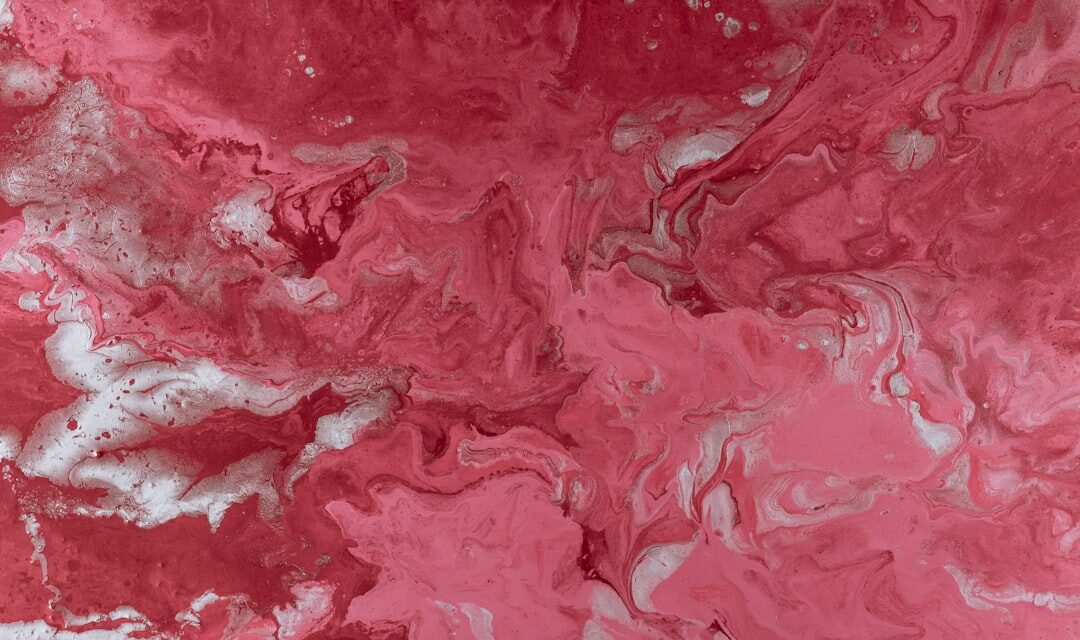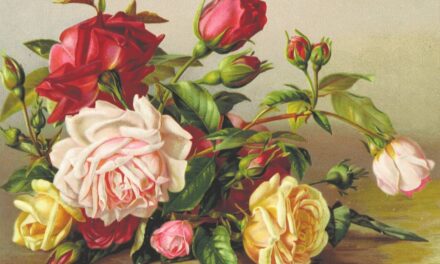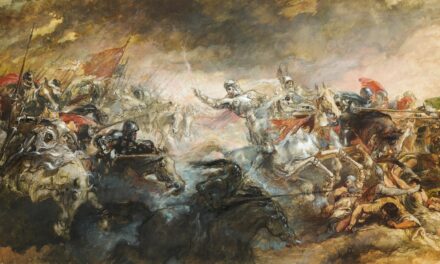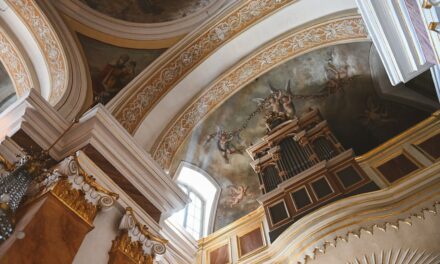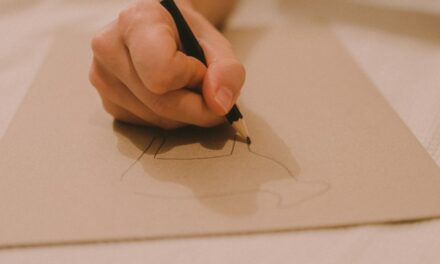Camaïeu is a term that originates from the French word “camaïeu,” which refers to a technique of painting or drawing that employs a monochromatic palette to create a sense of depth and dimension. This artistic method is characterised by the use of varying shades of a single colour, allowing artists to explore the subtleties of light and shadow while maintaining a cohesive visual theme. The technique can be applied to various mediums, including painting, ceramics, and textiles, making it a versatile choice for artists seeking to convey emotion and atmosphere through colour.
Camaïeu is not merely about the application of colour; it also involves a deep understanding of form and composition, as the artist must skillfully manipulate the tonal variations to achieve the desired effect. The beauty of Camaïeu lies in its ability to evoke a sense of harmony and unity within a piece. By limiting the colour palette, artists can focus on the interplay of light and shadow, creating a three-dimensional quality that draws the viewer in.
This technique has been employed throughout history, often seen in classical art forms where artists sought to depict realism and depth. Camaïeu can also be interpreted in a broader sense, encompassing any artwork that utilises a limited colour scheme to create visual impact. As such, it remains an important concept in contemporary art, influencing various styles and movements that continue to explore the relationship between colour, form, and perception.
Summary
- Camaïeu is a painting technique that uses varying shades of a single colour to create depth and dimension in a composition.
- Camaïeu has been used since ancient times, with examples found in Egyptian and Roman art, and became popular in Europe during the Renaissance.
- Materials and tools for Camaïeu include a single colour of paint, brushes, and a surface to paint on, such as paper, canvas, or wood.
- Techniques for creating Camaïeu involve layering different shades of the chosen colour to create a sense of depth and form in the artwork.
- Styles and variations of Camaïeu include grisaille, which uses shades of grey, and verdaille, which uses shades of green, as well as monochrome and tonal variations.
The history of Camaïeu
The origins of Camaïeu can be traced back to ancient civilisations, where artists began experimenting with monochromatic techniques to enhance their works. In ancient Greece and Rome, artists used variations of a single hue to create depth in their frescoes and sculptures. However, it was during the Renaissance that Camaïeu truly flourished as an artistic technique.
Renowned artists such as Leonardo da Vinci and Michelangelo employed this method to achieve lifelike representations in their paintings, using subtle gradations of colour to depict human figures and landscapes with remarkable realism. The Renaissance marked a pivotal moment in art history, as artists began to prioritise observation and naturalism, leading to the widespread adoption of Camaïeu in various forms. As art movements evolved over the centuries, Camaïeu continued to adapt and find new expressions.
In the 18th century, the technique gained popularity in France, particularly in decorative arts such as porcelain painting and textile design. Artists began to explore the emotional resonance of colour, using Camaïeu not only for its aesthetic qualities but also as a means of conveying mood and atmosphere. The 19th century saw further developments with the advent of Impressionism, where artists like Claude Monet experimented with light and colour in innovative ways.
Today, Camaïeu remains relevant in contemporary art practices, with modern artists drawing inspiration from its rich history while pushing the boundaries of colour theory and expression.
Materials and tools for Camaïeu

To create Camaïeu artworks, artists require a selection of materials that facilitate the exploration of tonal variations within a single colour. The most common medium for Camaïeu is paint, with acrylics and oils being particularly popular due to their versatility and ease of blending. Acrylic paints dry quickly, allowing for rapid layering and adjustments, while oil paints offer a longer working time, enabling artists to achieve smooth transitions between shades.
Additionally, watercolours can be used for a more delicate approach, providing transparency that enhances the ethereal quality often associated with Camaïeu. In terms of tools, brushes are essential for applying paint with precision and control. Artists may choose a variety of brush shapes and sizes depending on their desired effect; flat brushes are ideal for broad strokes and washes, while round brushes allow for finer details.
Palette knives can also be employed for mixing colours and creating texture within the artwork. Beyond paint and brushes, artists may utilise other materials such as pastels or charcoal for drawing applications of Camaïeu. The choice of substrate is equally important; canvas, paper, or wood panels can all serve as surfaces for Camaïeu works, each offering unique characteristics that influence the final outcome.
Techniques for creating Camaïeu
Creating a successful Camaïeu piece involves mastering several techniques that allow for the effective manipulation of tonal values within a limited colour palette. One fundamental approach is glazing, where thin layers of transparent paint are applied over dried layers to build depth and richness in colour. This technique enables artists to achieve luminous effects by allowing underlying tones to shine through while adding complexity to the overall composition.
Additionally, scumbling—a technique involving the application of a thin layer of opaque paint over a dry layer—can create texture and visual interest by allowing glimpses of previous colours to emerge. Another essential technique in Camaïeu is blending, which involves smoothly transitioning between different shades of the same colour. This can be achieved through various methods such as wet-on-wet blending, where fresh paint is applied onto wet layers, or dry brushing, where a dry brush is used to lightly apply paint over an already dried surface.
Artists may also experiment with stippling or dabbing techniques to create unique textures that enhance the visual impact of their work. Ultimately, the key to successful Camaïeu lies in practice and experimentation; artists must develop their own style while honing their skills in manipulating colour and form.
Styles and variations of Camaïeu
Camaïeu encompasses a wide range of styles and variations that reflect individual artistic interpretations and cultural influences. One notable style is monochrome painting, where artists utilise only one hue in various shades to create striking visual statements. This approach often emphasises simplicity and minimalism, allowing viewers to engage with the artwork on a deeper level by focusing on form and composition rather than being distracted by multiple colours.
Monochrome works can evoke powerful emotions through their stark contrasts and subtle gradations. Another variation is found in textile arts, where Camaïeu techniques are applied to fabric design. This can include techniques such as dyeing or printing fabrics using a limited colour palette to create intricate patterns that maintain visual coherence.
In ceramics, artists may employ Camaïeu by glazing pieces with varying shades of a single colour, resulting in stunning visual effects that highlight the form of each object. The adaptability of Camaïeu across different mediums showcases its enduring appeal and relevance in contemporary art practices.
Famous artists known for using Camaïeu

Throughout art history, several renowned artists have embraced Camaïeu techniques in their work, contributing significantly to its evolution and popularity. One such artist is Jean-Auguste-Dominique Ingres, a prominent figure in Neoclassicism who often employed monochromatic palettes to achieve remarkable depth in his portraits and historical scenes. Ingres’s meticulous attention to detail and mastery of form exemplify how Camaïeu can enhance realism while maintaining an elegant aesthetic.
His works continue to inspire contemporary artists who seek to explore similar themes through limited colour schemes. Another influential artist known for his use of Camaïeu is Pablo Picasso during his Blue Period. In this phase, Picasso predominantly utilised shades of blue to convey themes of melancholy and introspection.
The emotional weight carried by his monochromatic palette allowed him to express complex human experiences through simplicity. Picasso’s innovative approach not only redefined artistic expression but also highlighted the power of colour in evoking emotion—a principle that remains central to Camaïeu today.
Tips for beginners in Camaïeu
For those new to Camaïeu, starting with a limited colour palette can be an effective way to grasp the fundamentals of this technique. Choosing one colour and exploring its various shades will help beginners understand how light interacts with form while developing their blending skills. It is advisable to create a value scale by mixing different amounts of white or black with the chosen hue; this exercise will provide insight into how tonal variations can affect the overall composition.
Additionally, practising layering techniques is crucial for mastering Camaïeu. Beginners should experiment with glazing and scumbling methods on small canvases or paper before attempting larger works. This allows for exploration without the pressure of creating a finished piece right away.
Observing how light interacts with objects in real life can also inform artistic decisions; studying shadows and highlights will enhance an artist’s ability to replicate these effects within their own work. Ultimately, patience and practice are key components for success in mastering Camaïeu.
The contemporary relevance of Camaïeu
In today’s art world, Camaïeu continues to hold significant relevance as artists explore its potential within contemporary practices. Many modern creators are drawn to the technique’s ability to convey emotion through simplicity while allowing for personal expression within a limited framework. As society becomes increasingly saturated with vibrant colours and complex imagery, the understated elegance of Camaïeu offers a refreshing alternative that encourages viewers to engage more deeply with each piece.
Moreover, Camaïeu’s adaptability across various mediums ensures its ongoing relevance in diverse artistic fields—from painting and sculpture to textiles and ceramics. Contemporary artists often blend traditional techniques with modern concepts, resulting in innovative interpretations that challenge conventional boundaries. As discussions around sustainability grow within the art community, many creators are also embracing monochromatic palettes as a means of reducing waste while exploring new forms of expression.
Thus, Camaïeu remains not only an important historical technique but also a vital part of contemporary artistic discourse that continues to inspire new generations of creators.
For those intrigued by the nuances of art techniques such as Camaïeu, exploring different artistic styles and their historical contexts can provide deeper insights. A recommended read is An Introduction to the Painting ‘Bacchanals’ 1523-1526 by Titian. This article delves into the Renaissance era, showcasing how Titian’s use of vibrant colours and dynamic compositions influenced the art world. Understanding his techniques can enrich one’s appreciation of Camaïeu and other monochromatic styles, highlighting the evolution of artistic expression through the ages.
